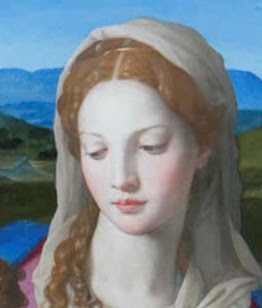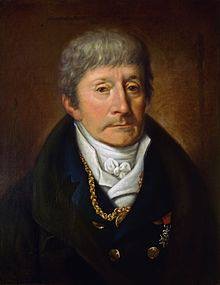ANOTHER DE’ MEDICI, THIS ONE A POPE
Of the careers and positions held by members of the great de’ Medici family of Firenze, besides those in banking and commerce, was the papacy.
The Medicis produced four popes: Leo X, Clement VII, Pius IV and Leo XI.
It is said that their genes have been mixed into many of Europe's royal families. (Please comment on this statement).
(BTW, it is stated that the last Medici ruler died without a male heir in 1737, ending the family dynasty after almost three centuries).
Here are the dates of the Medici popes:
Pope Leo X (December 11, 1475 – December 1, 1521), born Giovanni de' Medici, was pope from 1513 to his death.
Pope Clement VII (May 26, 1478 – September 25, 1534), born Giulio di Giuliano de' Medici, Giuliano di Piero de’ Medici’s illegitimate son by his mistress Fioretta Gorini. He was a cardinal from 1513 to 1523 and was pope from 1523 to 1534. He was a first cousin of Leo X.
Pope Pius IV (31 March 1499 – December 9, 1565), born Giovanni Angelo Medici, was pope from 1559 to 1565. However, he was only distantly related to the other Medici Popes.
Pope Leo XI (June 2, 1535 – April 27, 1605), born Alessandro Ottaviano de' Medici, was pope from April 1, 1605 to April 27 1605.
I present for your admiration, study and discussion the great c. 1518 Raffaello (Raphael) portrait of Pope Leo X (Leone dieci, Giovanni di Lorenzo de’ Medici), one of the masterpieces in the Uffizi.
This is one of Raffaello’s last works and one which is possibly one of the only ones he designed and painted by himself in his last years
The figure of Pope Leo X here is monumental. In fact, the realism we see in this painting is one of Raffaelo’s greatest achievements, imho. I place it with Raffaello’s great portrait of Baldassare Castiglione (Louvre) as among the greatest portraits of that time.
The black background allows Pope Leo and his cardinals to be spotlighted, a proto-tenebroso technique. This creates a dramatic aspect to this masterpieces.
An illuminated prayer book lies open on the table in front of Pope Leo. On the same table rests a finely carved bell. Both objects reveal the exquisite tastes of the Pope who was an active patron of the arts, and somewhat of a bon vivant
Ref: wga.hu and Catholic encyclopedia entry on Pope Leo X(see in references, and also see comments for excerpts and reference)
The pommel on top of the Pope's chair evokes the symbolic abacus balls of the Medici family, while the illuminated Bible open on the table has been identified as the Hamilton Bible. Ref: Bernice F. Davidson, Raphael's Bible (1985), p. 12.
As an ophthalmologist, I am always fascinated by the ocular issues of the de’ Medici and the signs we see here.
We know that the de’ Medici were a learned, bookish and myopic family. It is written that Pope Leo “read letters always close to his nose.”
But we can go further than inferences. How?
The Pope’s myopia can proven here by the lens that he is holding in his Left hand.
You might quite logically think that what the Pope is holding is a magnifying lens.
But it is not a magnifier. Look carefully at it and you will not see any enlargement of Leo’s thumb beneath it, which a magnifier would do. In fact, the tip of the thumb is slightly smaller than it should be.
Thus the lens cannot be a magnifying lens.
So what is it?
In fact, this handheld lens still exists.
You can see it in the Museo di Galileo (formerly Museo Storia della Scienza di Firenze). It has been measured at - 12 diopters (minus signs before diopter numbers mean myopia, plus signs mean hyperopia or presbyopia).
So, this Pope was myopic, indeed highly myopic.
The cardinal to the left of the painting is identified as Giulio di Giuliano de' Medici. He would become the future Pope Clement VII.
The other cardinal is usually identified as Luigi de' Rossi, who was a maternal cousin to both Pope Leo X and Cardinal Giulio di Giuliano.
This great painting doesn’t travel, per an expert committee of art conservators, because it is too fragile.
Yet, the painting did travel.
Notwithstanding the committee’s opinion, it traveled to the blockbuster Raffaello show at the Scuderie del Quirinale in Rome, last year, after which all the conservators resigned.
“On February 24, the scientific committee at the Uffizi gallery in Firenze, a group of experts tasked with evaluating which artworks are fit for loan, quit en masse in protest over the decision to loan this famed Raphael painting for the blockbuster retrospective of the artist in Rome.
“According to a letter sent to its administering body, which includes the education ministry and Firenze’s city council, the panel said it had deemed the 1518 portrait of Pope Leo X unfit for travel from the Uffizi.
“The work was recently restored, and the letter’s authors stated they had received confirmation from Uffizi director Eike Schmidt in December that their ban on the loan would be honored. Only later, they said, did they discover via local media reports that the painting would, in fact, be making an appearance in Rome for a show at the Scuderie del Quirinale.”
Go figure.
Zoomable image link here:
https://artsandculture.google.com/asset/portrait-of-pope-leo-x-withcardinals-giulio-de-medici-andluigi-de-rossi-raffaello-sanzio/qwFo4XF73Dmd1Q?hl=en
References:
1) Sir Patrick Trevor-Roper, The World Through Blunted Sight, Penguin Press. 1988. pp. 28-30.
2) wga.hu
3) Bernice F. Davidson, Raphael's Bible (1985), p. 12.
4) Louis Alaerts. La myopie héréditaire des Médicis. Brussels. Laboratories Cusi. 1958.
5) Catholic Encyclopedia entry on Leo X:
https://www.newadvent.org/cathen/09162a.htm
Portrait of Pope Leo X (Giovanni di Lorenzo de’ Medici) and his cousins, the cardinals Giulio de' Medici and Luigi de' Rossi
Raffaello Sanzio (Raphael)
Oil on panel
154 cm x 119 cm (5 feet x 4 feet)
1518-1519
Uffizi




















